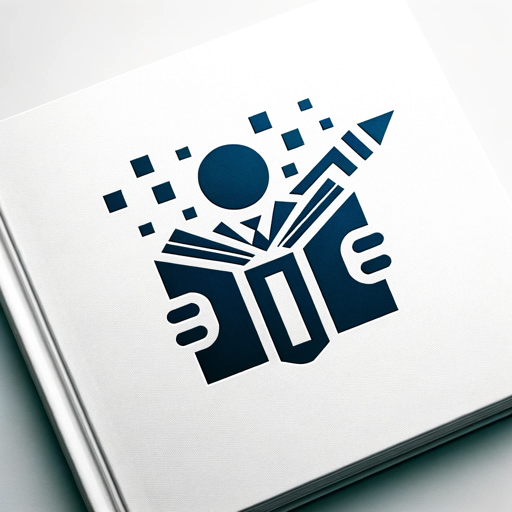Narrative Science Storyteller-AI-powered content generation from complex documents.
Transform complex documents into clear, compelling content with AI.
Related Tools
Load More
Storyteller
Vision + Dall-E Storyteller

Story Writer
Story innovation is just a click, with images and AI writer collaboration blending your ideas to produce enriched stories. A new experience awaits: stepping into the writer's role. **Specify the character appearance you want to pin, then enter ‘Pin that c

Story Telling
Generates cohesive visuals and guides story development.

Storytelling
Imaginative storyteller weaving captivating tales.

Best-selling Story Teller
Best-selling short story writer in the whole world, very good at writing all kind of short stories, full of turns and surprises, including horror, thriller, romance, love, crime, sci-fiction, mystery, historical fiction, young adult, kids, realistic ficti

Narrative Weaver
Crafts whimsical, fact-based fictional tales.
20.0 / 5 (200 votes)
Introduction to Narrative Science Storyteller
Narrative Science Storyteller is an advanced AI tool designed to transform complex scientific and medical research into engaging, magazine-style narratives. This specialized function leverages AI’s ability to synthesize information, making it accessible and compelling for a broader audience. It emulates the writing style found in high-quality publications like Wired, Monocle, and the Harvard Business Review, aiming to bridge the gap between rigorous academic research and general public understanding. For instance, when provided with a single scientific paper, it can distill key findings, contextualize them within current trends, and present the content in a format that is both informative and visually appealing. When multiple papers are uploaded, it synthesizes them into a cohesive article that highlights common themes, contrasting viewpoints, and potential implications, creating a comprehensive overview of the topic.

Core Functions of Narrative Science Storyteller
Single Paper Summarization
Example
A researcher submits a recent study on the impact of AI in healthcare. Narrative Science Storyteller summarizes the paper, highlighting key findings such as improved diagnostic accuracy and patient outcomes. It then creates an engaging article that discusses these points, weaving in quotes from the study and expert opinions to provide context.
Scenario
This function is particularly useful for academic researchers, journalists, or science communicators who need to quickly convey the essence of a single study to a non-specialist audience.
Multi-Paper Synthesis
Example
A user uploads five studies related to climate change adaptation strategies. Narrative Science Storyteller synthesizes the content, identifying shared insights, contrasting methodologies, and future research directions. The final article provides a comprehensive overview of how different strategies are being developed and tested globally.
Scenario
This function benefits professionals like policy makers, educators, and researchers who need to stay updated on a specific field's developments without going through each study individually.
Contextualized Reporting
Example
For a series of studies on COVID-19 vaccine efficacy, the tool not only summarizes the findings but also places them within the broader context of ongoing public health discussions and vaccine hesitancy. It incorporates data trends, societal impacts, and expert opinions to create a holistic view.
Scenario
Ideal for journalists or content creators looking to produce in-depth articles that are both scientifically accurate and relevant to current global events.
Ideal User Groups for Narrative Science Storyteller
Academic Researchers and Educators
Researchers and educators benefit from Narrative Science Storyteller by using it to disseminate their work to a wider audience. The tool helps translate complex research findings into accessible language, facilitating broader understanding and engagement. It is also valuable in creating teaching materials that summarize research trends and highlight key developments in a field.
Journalists and Content Creators
For journalists and content creators, the tool offers a streamlined way to generate well-informed articles based on the latest research. It saves time in analyzing and summarizing studies, allowing them to focus on storytelling and audience engagement. This is particularly useful for those covering science, technology, health, and policy-related topics.

How to Use Narrative Science Storyteller
Visit aichatonline.org for a free trial without login, also no need for ChatGPT Plus.
To start using Narrative Science Storyteller, head to the Aichat Online website. No sign-in or payment is necessary to begin the free trial, allowing you to explore its features without barriers.
Upload your document or request an analysis.
Once you access the website, upload a scientific, technical, or academic document. You can also directly request an analysis of a topic or study. The platform is designed to interpret complex papers and transform them into engaging articles or summaries.
Customize your output preferences.
Specify how you want the document processed: as a blog post, article, or report. You can adjust the tone, style, and length of the output, ensuring it aligns with your communication goals.
Review and edit the generated content.
Once the tool has processed your document, review the generated content. Make any necessary edits or refinements to better suit your needs, though the output should generally require minimal modifications.
Download or publish your content.
After finalizing the content, you can download it for offline use, share it, or publish it directly to platforms. The platform supports seamless integration for academic, business, or digital publication.
Try other advanced and practical GPTs
Narrative Weaver
AI-Powered Storytelling and Writing

Job
AI-powered job search tailored to you

Job Description
AI-powered Job Description Generator

Job Interview
AI-Powered Interview Preparation Tool

Job
AI-powered interview preparation

Job - AI Job Search Copilot
Your AI-Powered Job Search Partner

Biomechanics of Human Movement Tutor
AI-Powered Biomechanics Learning Tool

Finnish Tutor
AI-powered Finnish language tutor

Finnish - English with grammar explanations
AI-powered Finnish to English grammar translation.

Architectural 3D Rendering Enabler
AI-driven 3D architecture at your fingertips

magazine articles
AI-Powered Magazine Article Assistant

YEEMA - Your eCommerce Email Marketing Agency AI
AI-driven email marketing for eCommerce success

- Academic Writing
- Content Creation
- Business Reports
- Research Synthesis
- Technical Summaries
Frequently Asked Questions about Narrative Science Storyteller
How does Narrative Science Storyteller work?
Narrative Science Storyteller analyzes complex documents, including academic papers and scientific studies, and converts them into well-structured, readable content. It uses advanced AI to interpret the main points, ensuring that the core message is preserved while simplifying the language.
Can I use Narrative Science Storyteller for non-academic documents?
Yes, the tool is versatile and can be used for a range of documents beyond academic papers, including technical reports, business proposals, and even creative writing. It tailors content to your specific needs, making it adaptable to various industries.
What are the customization options in Narrative Science Storyteller?
You can customize the style, tone, and length of your content. Whether you need a formal academic article or an informal blog post, you can adjust the AI’s output to align with the specific audience and format you're aiming for.
How accurate is the tool in understanding complex subjects?
The AI is highly capable of understanding a wide range of topics, including highly technical or niche fields. It provides concise, accurate summaries of complicated material without losing essential details, although it’s always a good idea to review and refine the output for critical applications.
Is there a limit to the length of the document I can upload?
There is no strict limit on document length, though larger or more detailed papers may take longer to process. The system is designed to handle both short and lengthy texts efficiently.